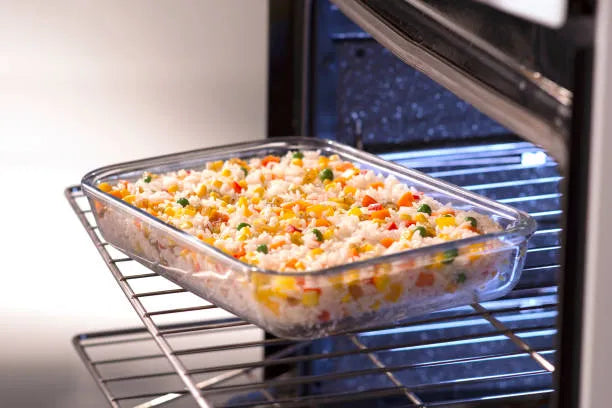
Why You Should Rethink Microwaving Your Food
Share
Microwaves have become a kitchen staple, offering quick and convenient meal preparation. Whether reheating leftovers or defrosting frozen meals, the microwave is often the go-to appliance for busy individuals. However, despite its ease of use, microwaving food may not always be the best option for preserving nutrition, flavor, and overall food quality. In this article, we’ll explore why you should reconsider how often you rely on the microwave and what alternative cooking methods may be better for your health and taste buds.
Nutrient Loss in Microwaved Food
One of the primary concerns with microwaving food is the potential loss of essential nutrients. While all cooking methods affect the nutritional content of food to some degree, microwaving can reduce the levels of water-soluble vitamins such as vitamin C and B vitamins. Since microwaves use high-intensity heat for short durations, they may alter the chemical structure of certain nutrients, making them less bioavailable. Steaming or sautéing food at a lower temperature may help retain more of these important nutrients.
Changes in Food Texture and Flavor
Have you ever noticed how microwaved food can sometimes become dry, rubbery, or unevenly heated? This is because microwaves heat food by exciting water molecules, causing uneven heating and inconsistent texture. Foods like bread tend to become hard and chewy, while proteins can become tough or rubbery. Traditional cooking methods, such as baking, grilling, or slow-cooking, often enhance the natural texture and flavor of food rather than diminish it.
Potential Health Concerns with Microwave-Safe Containers
Many people use plastic containers to heat food in the microwave, unaware that some plastics may release harmful chemicals when exposed to high heat. Chemicals like BPA and phthalates, which are found in certain plastics, can leach into food and may have potential health risks over time. Using glass or ceramic containers is a safer option, but avoiding microwaving plastic altogether is a wise choice for those concerned about chemical exposure.
The Impact on Food Quality and Taste
Microwaving is known for its speed, but this often comes at the cost of food quality. Foods that are traditionally cooked using slower methods tend to develop richer flavors due to the gradual breakdown of proteins and natural sugars. For example, a slowly roasted piece of meat or simmered soup will have a depth of flavor that microwaving simply cannot replicate. If taste and texture are priorities, opting for stovetop or oven cooking may be a better choice.
While the microwave is undoubtedly a convenient tool for busy lifestyles, it may not always be the best choice for food quality, nutrition, and health. The loss of essential nutrients, changes in food texture, and potential health risks from microwave-safe containers are all factors worth considering. Instead of relying on the microwave for all your cooking needs, experimenting with alternative methods such as steaming, baking, or grilling can lead to better-tasting and more nutritious meals. By rethinking how you use your microwave, you can make healthier and more satisfying food choices.
Get more knowledge about eating healthy, please refer to Mediterranean Vegetarian Cookbook.
